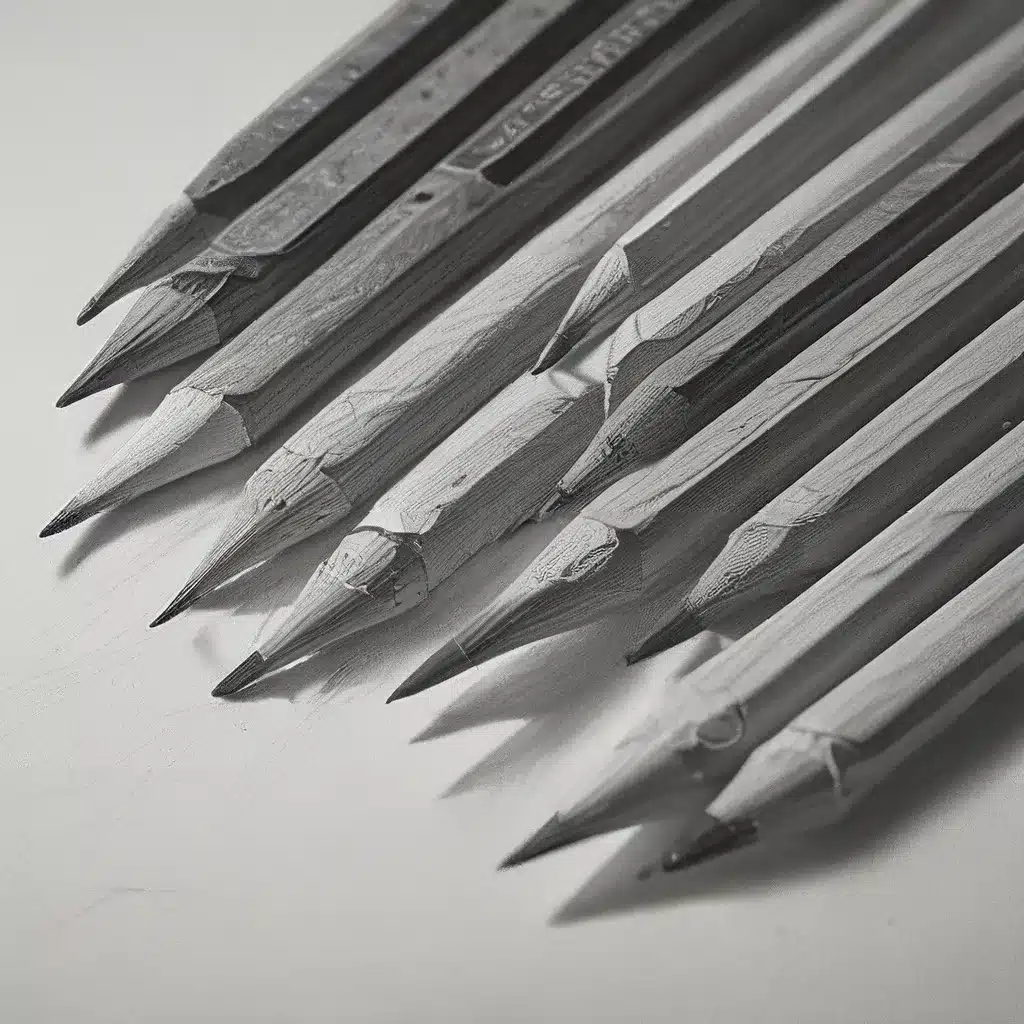
Unlocking the Power of Pencil Drawing
Pencils are the quintessential tools for artists, offering a versatile and accessible medium for creative expression. Whether you’re a seasoned painter exploring new techniques or a budding artist taking your first steps into the world of drawing, mastering the essentials of pencil drawing can unlock a world of artistic possibilities.
In this comprehensive guide, we’ll delve into the fundamental pencil techniques that every artist should have in their toolkit. From the basics of sketching and shading to more advanced methods like under drawings and layering, you’ll discover the building blocks of breathtaking pencil art.
Mastering the Fundamentals of Pencil Drawing
The journey to becoming a skilled pencil artist begins with understanding the essential techniques. Let’s start with the basics:
Sketching is the foundation of pencil drawing, allowing you to capture the essence of your subject matter and experiment with composition. By training your hand to move fluidly across the page, you’ll develop the muscle memory and confidence to tackle more complex projects.
Shading is a crucial technique that brings depth, dimension, and realism to your drawings. Experiment with different pencil strokes, such as cross-hatching, stippling, and blending, to create a range of values and textures.
Unlocking the Potential of Under Drawings
One of the most powerful tools in a pencil artist’s arsenal is the under drawing. This technique, also known as the “base layer,” serves as the foundation for your final artwork, allowing you to establish the composition, values, and even some details before applying your final colors or details.
Carrie Lewis, a seasoned artist, explains the benefits of using an under drawing:
“The under drawing is also sometimes called base layers. This illustration shows the under drawing or base layers for a recent landscape. To further complicate matters, some artists work over all of their drawing at each phase while others finish one section at a time.”
There are two primary approaches to under drawings:
-
Umber Under Drawing: This technique involves using shades of brown to establish the initial values and forms of your drawing. The warmth of the umber tones can be particularly effective for landscape scenes.
-
Complementary Under Drawing: For this method, you’ll choose a color that’s opposite your final palette on the color wheel. For example, using shades of red as an under drawing for a predominately green landscape. This can create a natural sense of depth and atmosphere.
Regardless of the approach, the key is to use a light touch and value-focused strokes to lay the groundwork for your final artwork. This not only streamlines the drawing process but also allows you to make adjustments and corrections more easily before adding the final layers of detail and color.
Elevating Your Drawings with Layering
Once you’ve mastered the under drawing technique, the next step is to explore the art of layering. This involves building up your drawing in successive steps, adding depth, texture, and nuance to your pencil work.
Colored pencil artist Carrie Lewis emphasizes the importance of layering:
“I often start with an under drawing for landscapes because I can work out the shapes, values, and even some of the details without also having to make color decisions. The earth tones or complementary colors also keep the greens in the landscape from getting too bright or artificial looking.”
By layering your pencil strokes, you can achieve a wide range of effects, from soft, atmospheric backgrounds to sharply defined foreground elements. Experiment with varying pencil hardnesses, from the soft, waxy Prismacolor to the firmer Polychromos, to create unique textures and blending possibilities.
Remember to always work with light pressure and build up your values gradually. This will not only give you more control over the final outcome but also make it easier to make corrections or adjustments along the way.
Exploring Innovative Pencil Techniques
As you progress in your pencil drawing journey, don’t be afraid to venture beyond the basics and experiment with more innovative techniques. From black paper to water-soluble pencils, there’s a world of creative possibilities waiting to be explored.
One such technique is the use of black paper, which can create a striking and dramatic effect. By using white pencils or pastel to layer your highlights and details, you can achieve a bold, high-contrast look that’s perfect for portraits, still lifes, or even abstract compositions.
Another exciting avenue to explore is water-soluble colored pencils. These versatile tools allow you to create fluid, painterly effects by adding water to your pencil strokes. Experiment with wet-on-dry and wet-on-wet techniques to achieve a range of textures and blending effects.
As you delve into these more advanced pencil drawing techniques, remember to approach them with an open mind and a willingness to play and experiment. The true joy of being an artist lies in the discovery and exploration of new creative possibilities.
Unleashing Your Creative Potential
Pencils are the gateway to a world of artistic expression, offering an accessible and rewarding medium for artists of all skill levels. By mastering the essential pencil techniques outlined in this guide, you’ll unlock a new level of creativity and confidence in your drawing practice.
Whether you’re sketching from life, capturing the essence of a landscape, or embarking on a bold, experimental piece, the power of the pencil is yours to wield. Embrace the journey, explore new techniques, and let your artistic vision shine through the timeless medium of pencil drawing.
Remember, the Pencil and Paint Muse community is here to support and inspire you every step of the way. Happy drawing!